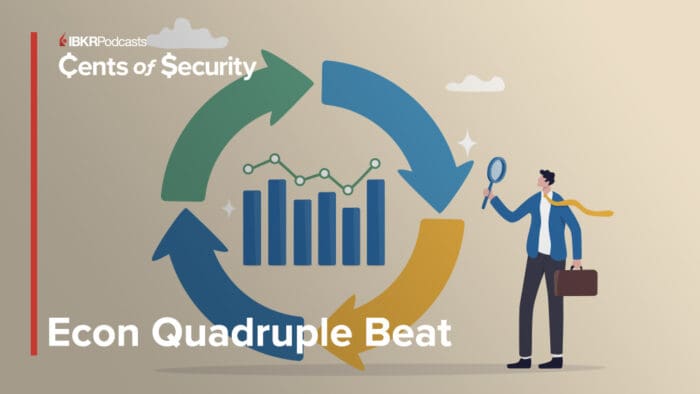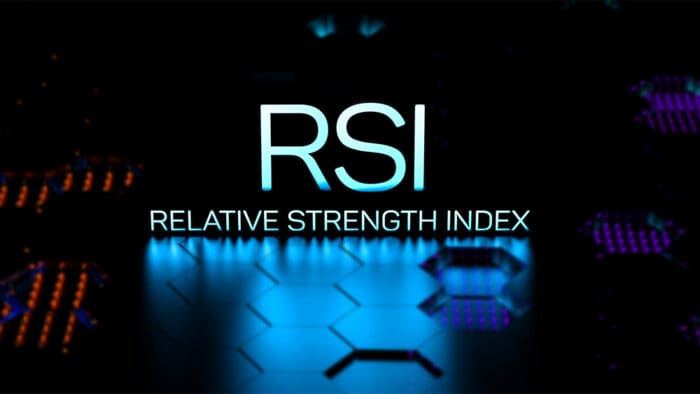Strong corporate earnings results combined with robust outlooks from Microsoft and Meta are bolstering AI enthusiasm and sending stocks to fresh records. The exuberance surrounding the mag7 is serving to counter dwindling rate cut probabilities, a result of yesterday’s hawkish pause by the Fed. Chair Powell discussed the need to watch price pressures closely due to the costs of some tariff-sensitive goods beginning to escalate. He also pointed to labor conditions as solid, which is the critical disagreement amongst the committee. Indeed, there were two dissenters for the first time since 1993, as Head of Supervision Michelle “Miki” Bowman and Governor Christopher Waller preferred a reduction this month in light of slowing job growth that is raising slowdown risks. And ahead of tomorrow’s trade deal deadline, agreements are being sealed under the wire as Washington secured settlements including South Korea, Thailand, Cambodia and the chances of more to come throughout the day are particularly elevated. Meanwhile, the economic calendar was generally well behaved, as the PCE, unemployment claims, and the ECI arrived close to projections. But the less followed data from Challenger, Gray & Christmas signaled a rise in roster trimming plans driven mainly by AI’s ability to handle routine tasks and uncertainty about import duties weighing on rosters. Turning to trading action, progress on cross-border commerce is pulling the yield curve south in bull flattening motion led by the long-end, as inflation expectations soften. Lighter borrowing charges are helping equities too, although they’ve pared much of their gains midday and traders are picking up volatility protection instruments and gold bars in case there’s turbulence around the corner. The commodity complex ex gold is down sharply, bitcoin and the greenback are near their respective flatlines and forecast contracts are seeing greater interest.
PCE Inflation Arrives a Little Hot
Price pressures accelerated slightly last month according to this morning’s Personal Consumption Expenditures (PCE) inflation gauges, although heavier costs weren’t enough to slow consumer spending, which posted a modest pick up on a month over month (m/m) basis. The headline and core PCE indices both rose 0.3% m/m and 2.6% and 2.8% year over year (y/y). The monthly figures met expectations but the annualized ones came in hotter by 0.1%. May’s numbers for comparison were 0.2% m/m for the two components and 2.4% and 2.8% y/y. Cost forces in June were characterized by energy, durable goods, non-durables, food and services increasing stickers by 0.9%, 0.5%, 0.4%, 0.3% and 0.2%.
Consumption Recovers
Consumer spending adjusted for inflation recovered from May’s decline as households shopped for nondurables and services while retreating from the durable good category. Indeed, volumes climbed 0.1% m/m, narrowly missing the median estimate of 0.2% while rebounding from the -0.2% drop in the prior month. Durable goods purchases contracted for the third consecutive time while services advanced just 0.1% in the same number of months, indicating incrementally soft budgets in the short-term. The two categories are critical because folks buy large products and discretionary services when they’re confident about the economy and are flush with cash, so these trends warrant attention. Nondurables did expand at an impressive 0.4% clip, however. Personal incomes rose at the equal pace as outlays leading to the savings rate remaining steady at 4.5%.
Unemployment Claims Well Anchored
Unemployment claims behaved well in the past two weeks both segments in the safe one. Initial filings rose by 1k to 218k for the week ended July 26 and arrived lighter than the median estimate of 224,000. Continuing applications came in at 1.946 million during the 7-day time period culminating on July 19. The result was softer than the 1.960 million expectation and equaled the prior interval’s result. In another encouraging sign of labor market conditions, the 4-week moving averages moved lower on both fronts, from 224,500 and 1.952 million to 221,000 and 1.949 million.
Fed Should Have Delivered a Mid-Cycle Adjustment
As you all well know by now, I thought a mid-cycle adjustment was warranted at yesterday’s meeting. Inflationary pressures remaining in the 2s alongside significant progress on trade deals with most tariff levels below 20% was enough in my view to trim the Fed’s benchmark to a range of 4% to 4.25% which still provides heavy restriction to the economy. Indeed, those rates are still strongly positive in real terms, meaning that they are much more elevated than the annualized pace of cost forces. While the economy is doing great overall, there are some soft patches on the horizon which include the manufacturing and housing sectors in recessions, the non-cyclical and slowing profile of job gains in recent months, decelerating consumer spending momentum amidst lighter discretionary outlays, weak household sentiment and anecdotal evidence of layoffs. These developments motivated dissenters at yesterday’s decision and warranted caution and a proactive quarter-point reduction from the central bank.
International Roundup
Hong Kong Posts Stronger GDP Than Expected
Hong Kong’s GDP expanded by 3.1% y/y in the second quarter of 2025, exceeding the median of 2.7% growth. This faster-than-expected growth was primarily driven by a robust export performance, boosted by “rush shipments” capitalizing on a temporary easing of US tariffs, and a significant increase in domestic demand, with private consumption expenditures rebounding by 1.9% annually in Q2 after a contraction in Q1.
Singapore Business Confidence Jumps
Singapore’s manufacturing sector experienced a notable turnaround in business confidence during the second quarter of 2025, reaching an index reading of 5 after a pessimistic -6 in the prior quarter. This improvement was widespread across several key segments. The chemicals sector saw a significant jump in sentiment, rising to -7 from -22, while the biomedical manufacturing sector also became less pessimistic, improving to -4 from -8. Confidence in precision engineering edged up to 4 from 2, and the electronics industry’s sentiment recovered to a positive 17 from -9. However, sentiment remained neutral in both the transport engineering and general manufacturing industries, registering 14 and 4 respectively, following previous readings of 14 and 4.
EU Unemployment Drops
Eurostat data for June 2025 reveals a stable unemployment rate across the European Union (EU) and the Euro area, despite global economic uncertainties. The Euro area recorded a jobless rate of 6.2%, unchanged from May and down from 6.4% in June 2024. While joblessness decreased in Spain, Italy, and Portugal, it remained stable in Germany, France, Belgium, and the Netherlands. Conversely, Austria, Poland, Denmark, and Finland experienced slight increases in unemployment during this period.
BoJ Holds
The Bank of Japan (BoJ) concluded its latest monetary policy meeting on Thursday, July 31, 2025, with a unanimous decision to maintain its benchmark short-term interest rate at 0.5%. This aligned with market expectations and keeps borrowing costs at their highest level since 2008. The decision was announced shortly after the U.S. Federal Reserve also opted to keep its rates unchanged.
Despite the overall contraction in Japan’s new housing starts in June 2025, the 15.6% y/y decrease was slightly better than the 16.3% decrease economists had anticipated. The decline in new construction was broadly observed across most categories, with the built-for-sale segment experiencing the steepest fall at 17.9%. Owned houses decreased by 16.4%, and rented homes saw a 14.0% drop. The only exception to this trend was construction starts for issued units, which showed acceleration. On a seasonally adjusted annualized basis, the number of housing starts increased to 647,000 in June, up from 529,000 in May.
Japan Manufacturing and Consumption Grow
Japan’s industrial production unexpectedly rose in June 2025, showing a seasonally adjusted 1.7% m/m increase, defying economists’ expectations for a decline and marking the first rise since March, according to the Ministry of Economy, Trade and Industry (METI). This stronger-than-anticipated performance also resulted in a 4.0% y/y increase, exceeding forecasts of a 1.3% gain and contrasting sharply with the previous month’s 2.4% contraction. The growth was primarily driven by increased output in transport equipment (excluding motor vehicles) and electronic parts and devices, despite US tariffs impacting sectors like steel, non-ferrous metals, and to a lesser extent, auto production.
Japan’s retail sales experienced a notable increase of 2.0% y/y in June 2025, according to the Ministry of Economy, Trade and Industry (METI). This growth, which slightly accelerated from a downwardly revised 1.9% rise in May, surpassed market expectations of 1.8% growth. This marks the 39th consecutive month of retail sales growth, indicating that rising wages continue to bolster consumer spending. Several categories contributed to this increase, including other retail sales (6.0%), pharmaceuticals & cosmetics (5.2%), clothing & personal goods (5.0%), machinery & equipment (4.8%), non-store retailers (2.8%), and food & beverages (1.7%). However, sales declined in department stores (-6.2%), fuel (-4.2%), and automobiles (-0.7%). On a monthly basis, retail sales rose by 1.0% in June, rebounding from an upwardly revised 0.6% fall in May, representing the fastest monthly pace in five months.
South Korea Retail Activity Advances
South Korea’s retail sales increased by 0.5% m/m in June 2025, marking the first rise in four months. This rebound was attributed to higher sales of semi-durable goods like clothing, which rose by 4.1%, and non-durable goods including cosmetics, which gained 0.3%. In contrast, sales of durable goods experienced a decline, with passenger car sales falling by 1.6%.
Australia Retail Sales Expand
Australian retail sales surged 1.2% m/m in June 2025, exceeding the forecasted 0.4% increase and marking the strongest growth since March 2022. This jump was primarily driven by non-food related spending, with household goods retailing rising by 2.3% and other retailing increasing by 1.9%. All industry groups saw revenue growth in June, except for cafes, restaurants, and takeaway food services, which experienced a 0.4% decline. On a y/y basis, annual retail sales climbed 4.9%, and retail sales volumes showed a modest 0.3% increase in the June quarter, marking a continuation of three consecutive quarters of growth.
Disclosure: Interactive Brokers Affiliate
Information posted on IBKR Campus that is provided by third-parties does NOT constitute a recommendation that you should contract for the services of that third party. Third-party participants who contribute to IBKR Campus are independent of Interactive Brokers and Interactive Brokers does not make any representations or warranties concerning the services offered, their past or future performance, or the accuracy of the information provided by the third party. Past performance is no guarantee of future results.
This material is from IBKR Macroeconomics, an affiliate of Interactive Brokers LLC, and is being posted with its permission. The views expressed in this material are solely those of the author and/or IBKR Macroeconomics and Interactive Brokers is not endorsing or recommending any investment or trading discussed in the material. This material is not and should not be construed as an offer to buy or sell any security. It should not be construed as research or investment advice or a recommendation to buy, sell or hold any security or commodity. This material does not and is not intended to take into account the particular financial conditions, investment objectives or requirements of individual customers. Before acting on this material, you should consider whether it is suitable for your particular circumstances and, as necessary, seek professional advice.



















Join The Conversation
For specific platform feedback and suggestions, please submit it directly to our team using these instructions.
If you have an account-specific question or concern, please reach out to Client Services.
We encourage you to look through our FAQs before posting. Your question may already be covered!